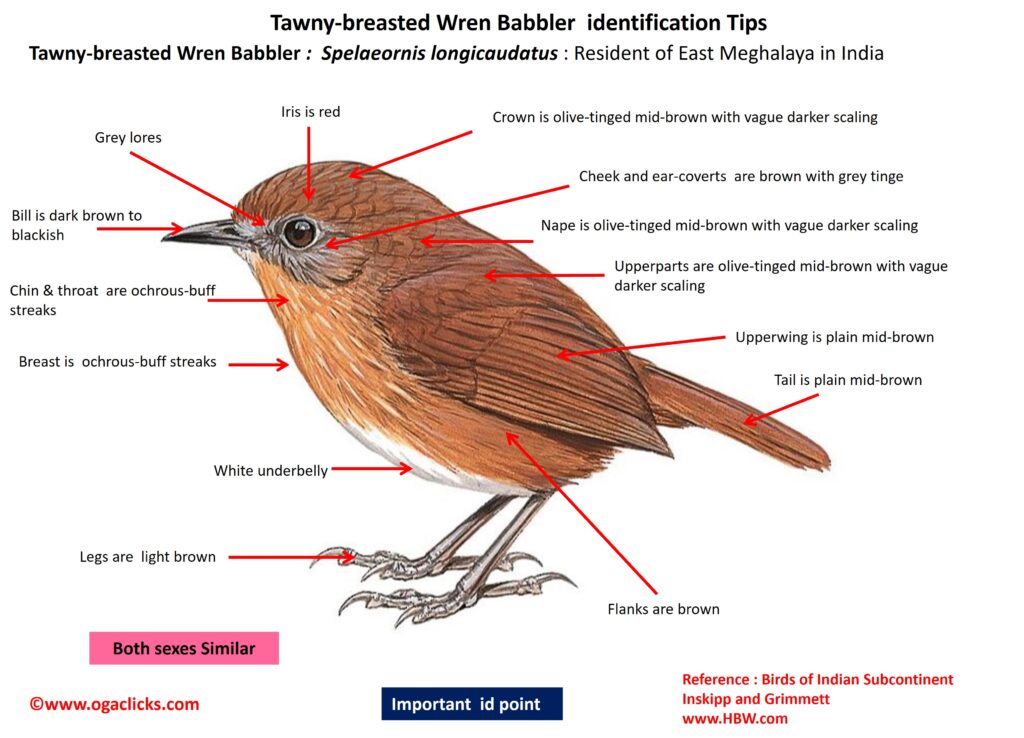
Tawny-breasted Wren Babbler Spelaeornis longicaudatus
Etymology :
- Spelaeornis: Greek word spelaion- cave; ornis – bird { Cave dwelling bird}
- Longicaudatus: Latin Word longus- long; caudatus –tailed { Long-tailed}
Vernacular Name: Naga: Tinglin-rui
Distribution in India: Resident of Eastern Meghalaya in India.
Description: Size of 11–12 cm. It is a nondescript wren-babbler, brown above and ochrous-buff below. The male has top of head and upperparts slightly olive-tinged mid-brown with vague darker scaling, forecrown with slight greyish tinge, upperwing and tail are plain mid-brown. The face, lores, narrow supercilium above eye, ear-coverts, cheek are brown with grey tinge. The underside, including submoustachial area, ochrous-buff with very indistinct streaky effect, belly with few irregular long white streaks or more complete white central patch, chin is sometimes whitish. The iris is red; bill is dark brown to blackish; legs are light brown. The female is brighter orange-buff below than male. The juvenile is uniform rufous-brown above, ochrous-buff feathers of breast with paler streaks, iris is brown.
Habitat: It is found in understorey of broadleaf evergreen forest, secondary growth with well-developed herbaceous, bushy and/or dense fern understorey, especially in ravines, and even in treeless areas on steep hillsides with rock and boulder outcrops. It is found at 1000–2000 m in Meghalaya, India.
Food habits: It eats Invertebrates. It is found singly or in pairs. It forages by creeping and climbing about in dense low vegetation and among boulders
Breeding habits: They breed in Apr–Jul. The nest is built by both sexes. The nest is a loose dome, a very deep cup, made of dark decayed leaves, roots and scraps of grass, with compact internal layer of rootlets, leaves and grasses, lined with soft fibrous material, leaf skeletons or other vegetable matter covering bottom and greater part of sides of nest. The nest is placed on ground among boulders in luxuriant undergrowth, or under bank just above streambed in bed of wet moss. They lay a clutch of 2–4 eggs.